DJI Air 3 review
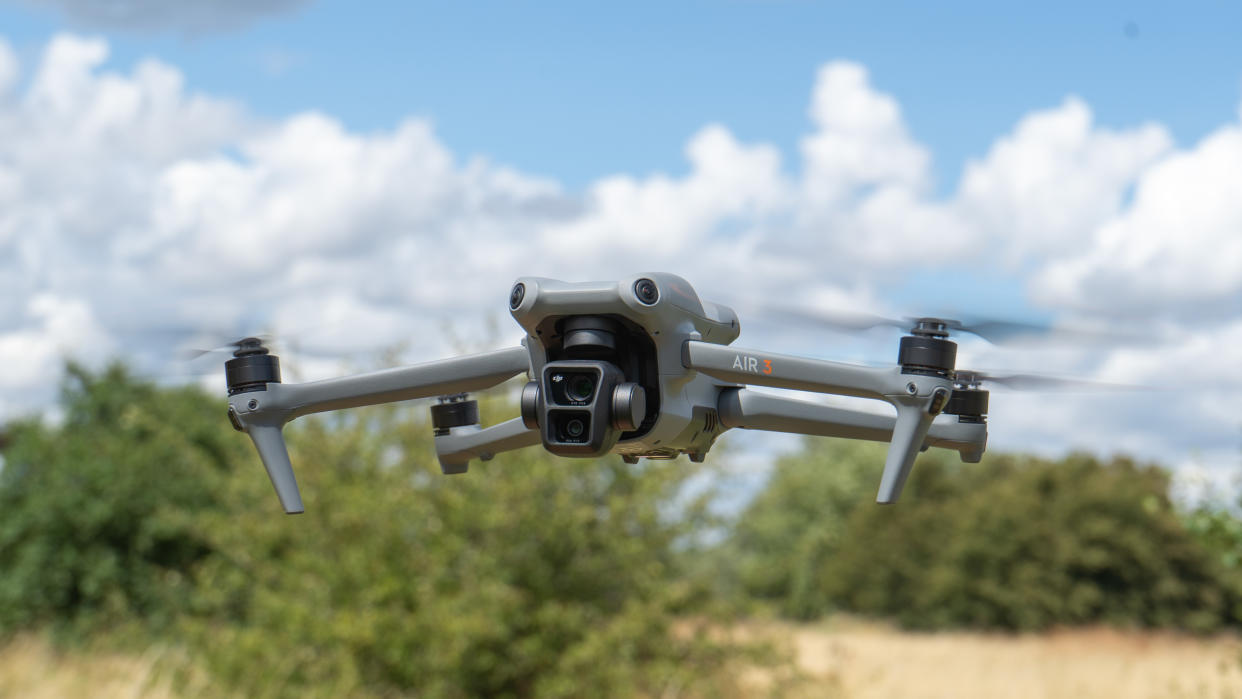
DJI's consumer line has a lot of choices in the ultralight category – drones at around 250g – and then two distinct airframes above that before things start getting car-like in their costing. They are the Air 3 (now) and the the Mavic 3. These two drones eschew the lowest weight limit in favor of the advantages a heftier aircraft can offer, not least sturdier performance against wind but also enough power to lift a better camera.
Given that the DJI Air 2S competed as much with the Mavic 3 as any other drone, DJI offered surprisingly little compromise on that front. The 20 megapixel 1-inch CMOS sensor captured video at up to 5.4K (at 30fps). That's not too bad at all.
The new Air 3 is looking to drop into the same slot in the range, but rather than chase higher resolutions has taken a leaf from the book of the Mavic 3 – and, indeed most phones – by offering multiple cameras. This actually comes at the cost of the 5.4K option, so the question is have things got better, or worse, or taken a bit of a side step into a new world?
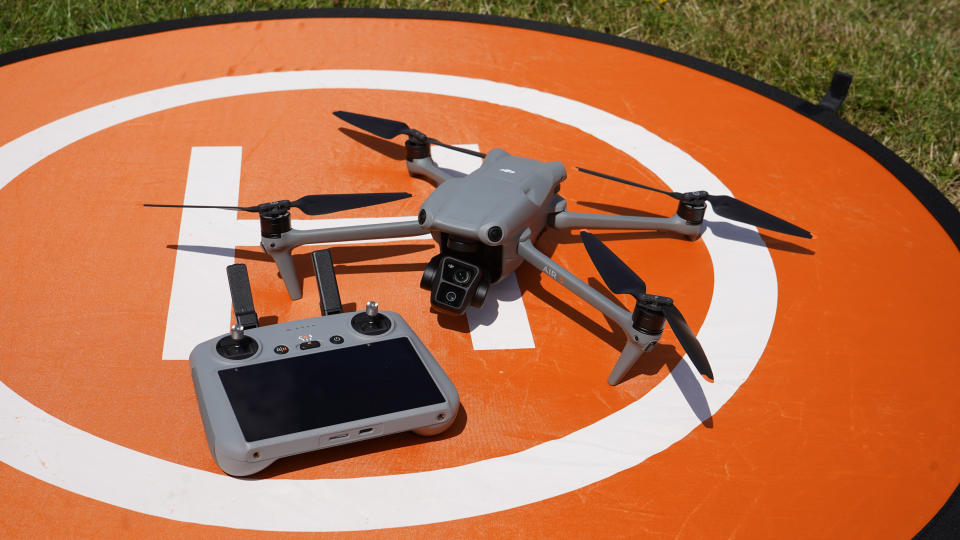
Specifications
Cameras: 24mm EFL + 70mm EFL
Image sensor: 1/1.3-inch 48 MP stacked CMOS (same on both)
Still image size: 8064 x 6048
ISO: 100-6400 (or 100-1600 in high dynamic range modes), 100-12800 night mode
Video: 4K @ 60fps Normal mode, 100fps Slow-Mo mode
Max frame-rate: 200fps at 1080P
Color modes: 8-bit or 10-bit 4:2:0 (HLG / D-Log M)
Radio / Range: DJI O4 / 20km (12.4 miles)
Max speed: 21m/s (19 m/s in EU)
Flight time: 46 min perfect / 42 min hover
Weight: 723g (on my scales, with battery)
Dimensions: 200 x 85 x 102mm (folded)
DJI RC 2 weight: 416g
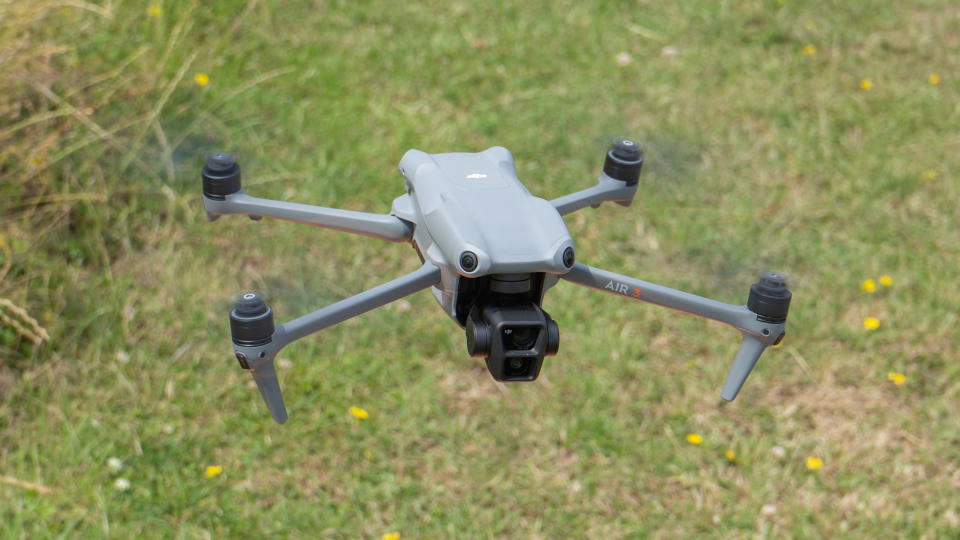
Key features
The Air 3 is a folding drone with dual 4K cameras, a wide at 24mm EFL and a tele at 70mm EFL. They both boast the same 48-megapixel sensor size, making it more consistent than previous hybrid cameras. It ships with the phone-ready DJI RC-N2 controller and one battery, or a choice of Fly More Kits with 3 batteries, a charging hun, and either the RC-N2 or the RC 2 with built-in screen.
The drone boasts lower noise propellers than some drones and DJI is now offering a choice of charger power draws.
While the Air 3 doesn't rotate its camera for 9:16 portrait video, it does use the full height of the 4:3 sensor rather than simply cropping 16:9 video. The airframe is equipped with DJI's all-round collision sensing system when in the normal and slow video-friendly flight modes (as usual, not in 'Sport'). It also has AI subject tracking and wapoint route planning.
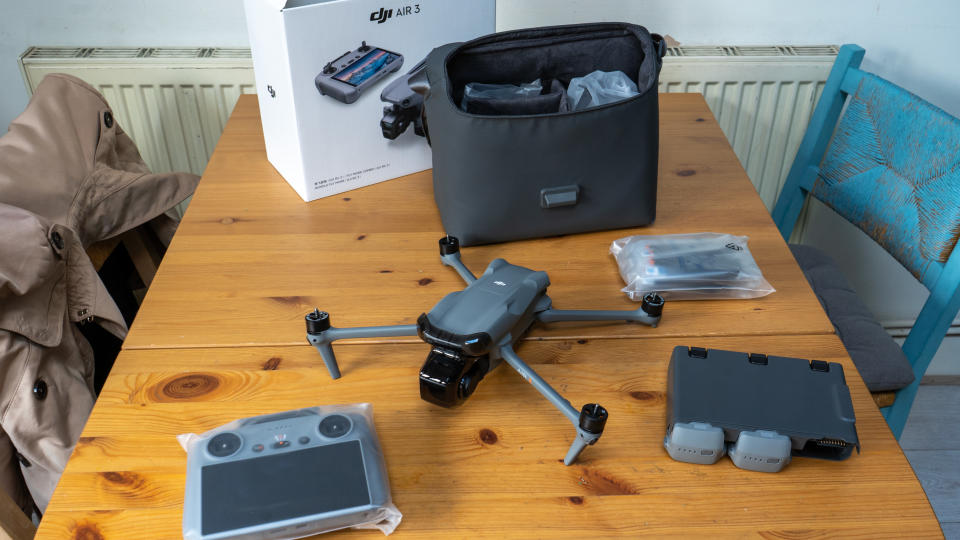
Build and handling
DJI was kind enough to lend me an Air 3 Fly More kit with the new DJI RC 2 controller, so the first thing I had to do was open the elegant shoulder bag into which every component is neatly arranged.
On opening it, I found a drone built to very much the same standard as the Mavic 3 Pro, but noticeably lighter in the hand. On the underside is a similar metallic base, almost like a heatsink, with cut-outs for a downward-facing LED lamp, as well as vision and distance sensors and a striking sticker, proudly proclaiming a noise level of 81 dB and an EU C1 class marker. It is noticeably heavier than the Air 2S at 720g over 595g, though once you're past 250g that matters relatively little, and portability is still excellent.
There are no real surprises to the design. The battery contains the power button and familiar 4-step LED charge meter, the drone has a USB-C charging socket next to the MicroUSB socket and, of course, from the front the camera housing has two lenses. Each top corner of the frame has a fish-eye camera for the collision-sensing vision system.
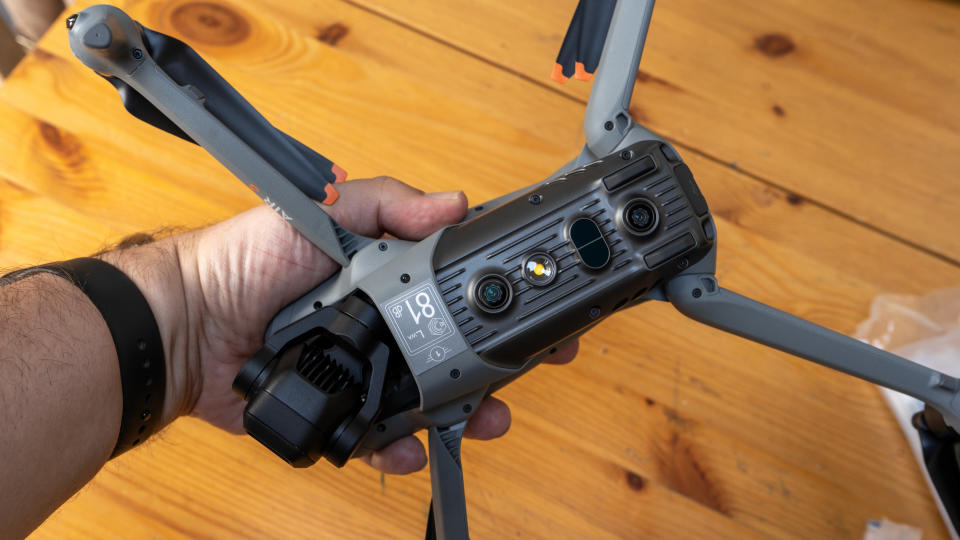
The gimbal can pan up to 60˚ above the horizon as well as down to the typical -90˚ (straight down) with DJI's usual finger wheel. it can also pan 5˚ under control (from a full range of 27˚ pan movement).
The DJI RC 2 does have a significant and obvious difference from the model it supersedes; fold-out antennas. We don't know if O4 calls for these or if practicality has simply trumped elegance here, in what is otherwise a very similar design, though slightly bulkier at 416g (against 380g). The screen remains adequate, if tough to see on a bright day. It's also a darker grey, marching the Air 3 – DJI's range now seems to get darker as it moves upscale.
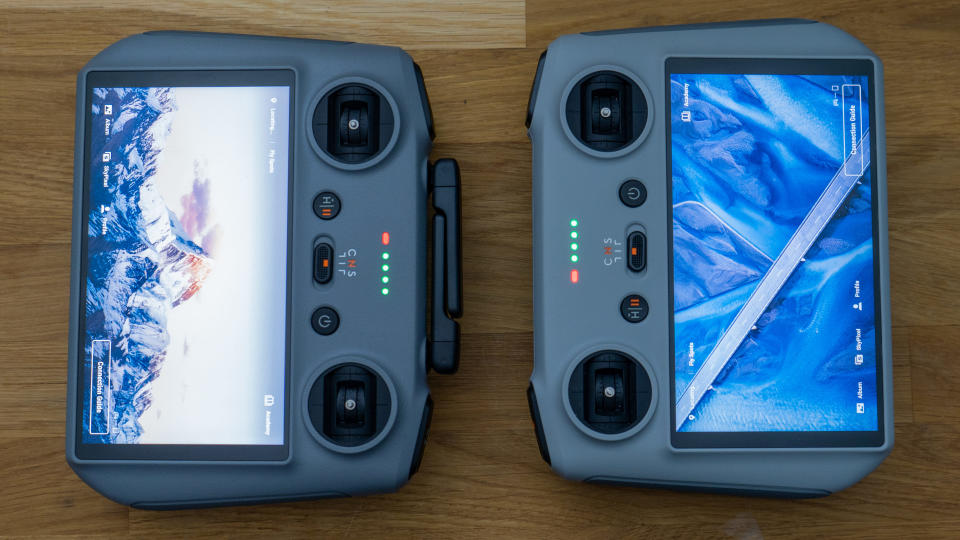
Control is via the app, and if you're using the DJI RC 2 this is embedded in the device running atop an Android system (you'll recognise the keyboard when entering the Wi-Fi password, and you can even take screen recordings). You can use the record and capture images to switch easily from camera to video mode, and the camera button also performs a tap focus. The USB-C port at the bottom is DisplayPort capable, so if you have AR glasses like the TCL Nxtwear S they'll act as a kind of FPV.
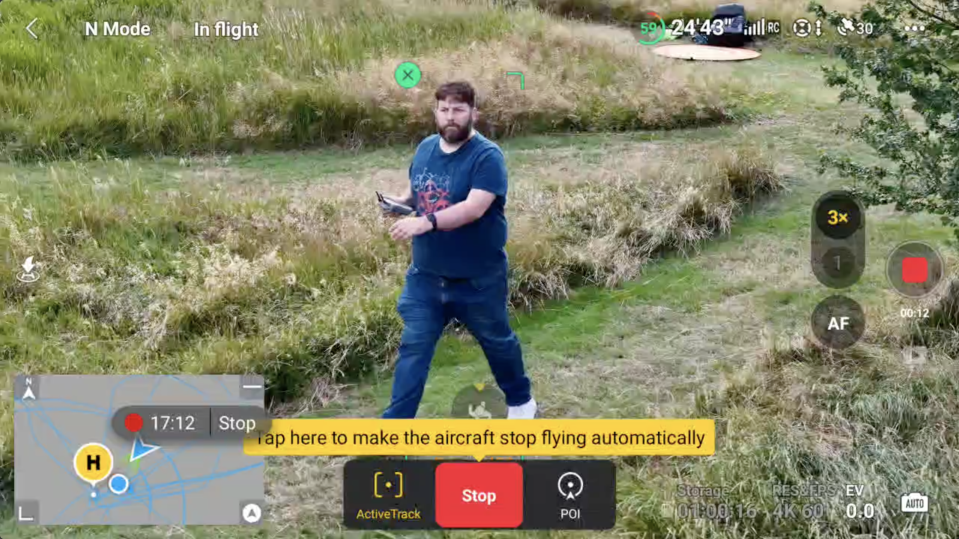
Software
DJI's software hasn't seen a lot of change in recent versions, and there isn't much to report here. Waypoints have arrived, though to be honest the interface definitely needs some work. On the plus side, it remains easy to invoke the subject tracking, and the drone can follow a moving person or vehicle from multiple angles while avoiding collision, or perform preset shots like an orbit.
Video shooting appears to max out at 60fps, but the video mode has a sub-menu which reveals night mode, which caps out at 30fps, and slow motion, which manages 100fps at 4K or up to 200fps at 1080P. That these aren't available from the standard frame rates menu is DJI's way of telling you that a degree of compromise might be happening here; honestly I'd prefer it to all be in the same menu, but that's me.

Performance
The drone's two-camera system is great. I might even have the Mavic 3 Pro's beaten in one way – by being very well-balanced. The 3 Pro is a lot better than the launch version when it comes to color balance between processors, but it's still "The Hasselblad camera and some others." Here both seem to be created equally and that's great. The same resolution makes things easier to work with, and means choosing your framing is an artistic choice, not something you feel pushed into by the tech. Bravo.
Our test images and video don't come from the best of days and, to be honest it shows. It was very breezy, and a storm was rolling in, as the Hyperlapse in our sample video rather gives away. Still, though, flying the drone didn't feel difficult – it certainly has the power to cut through the wind, and more so than the Mini 3 series. It isn't quite as steady off its feet as the Mavic 3, but that is to be expected.
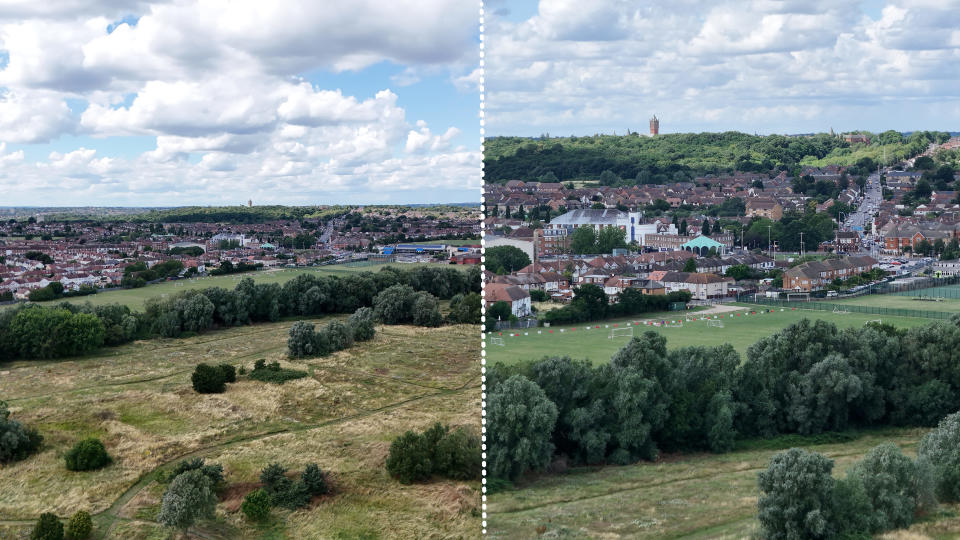
The full JPEGs from the system are about 22MB, so sadly the samples here have been scaled slightly to fit the web. The RAW files are the wrong side of 70MB, so there is a lot of data there to play with (though, pleasingly, you won't have to spend long worrying about fringing – even near the edge of the image. The 2.4μm pixel size on both sensors provides good detail.
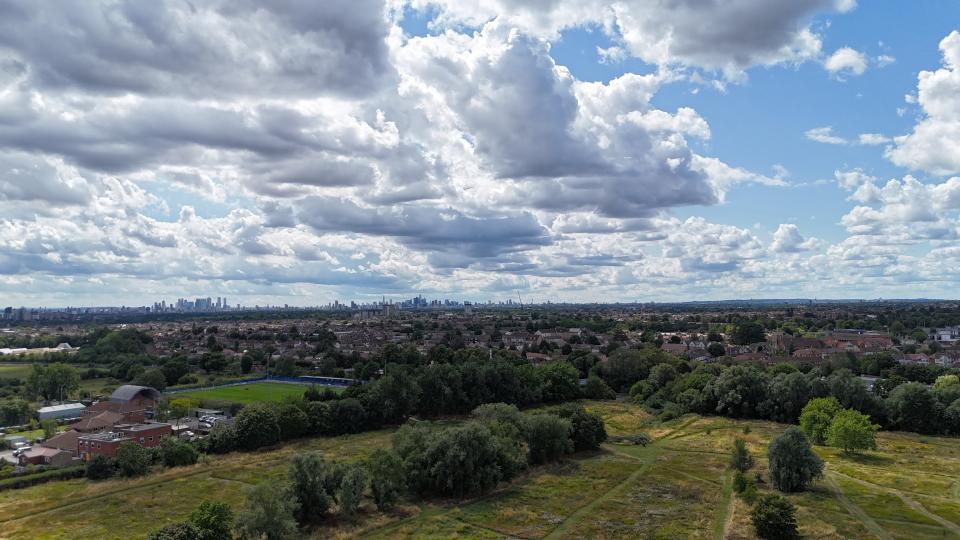
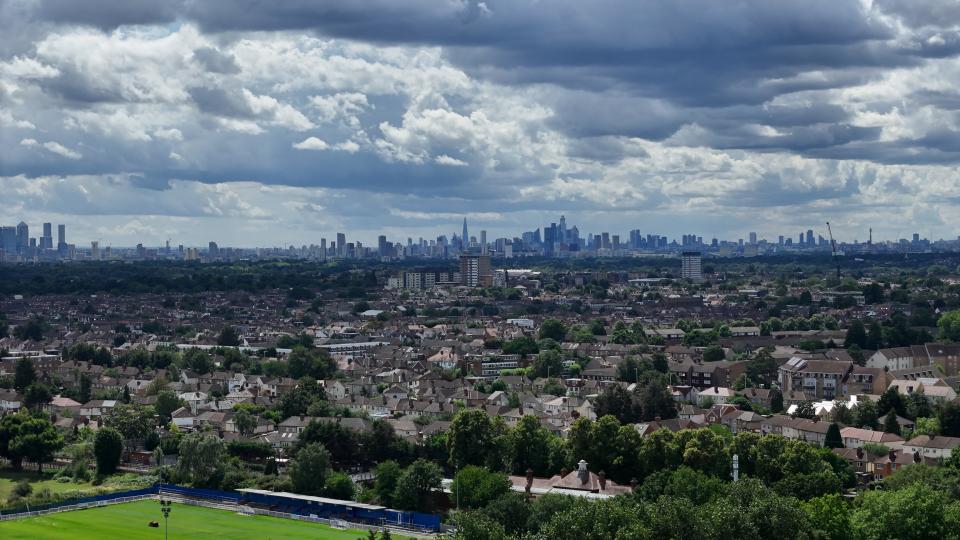
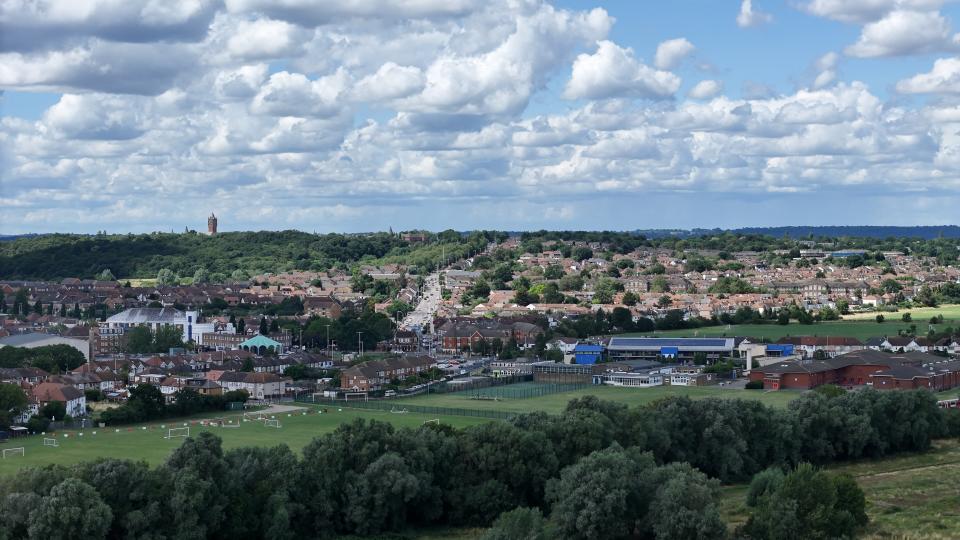
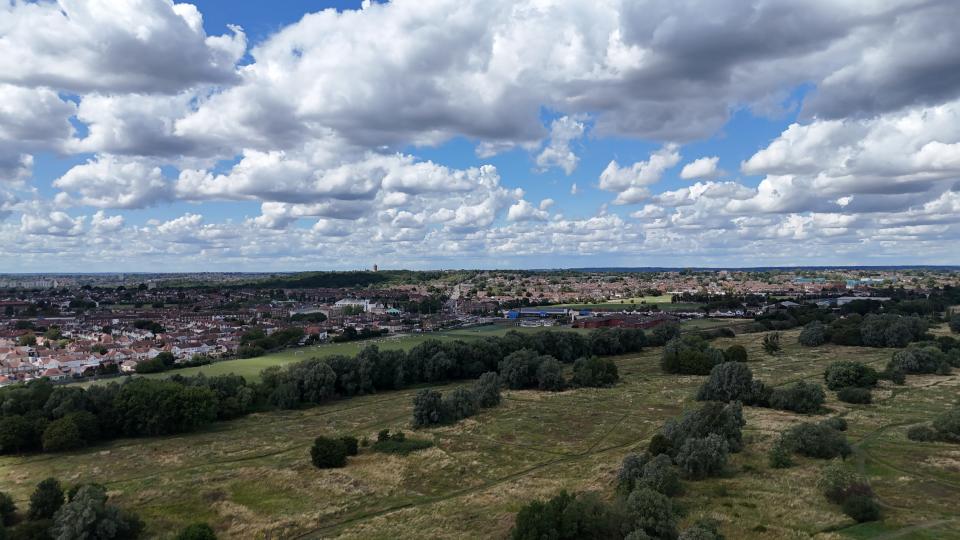
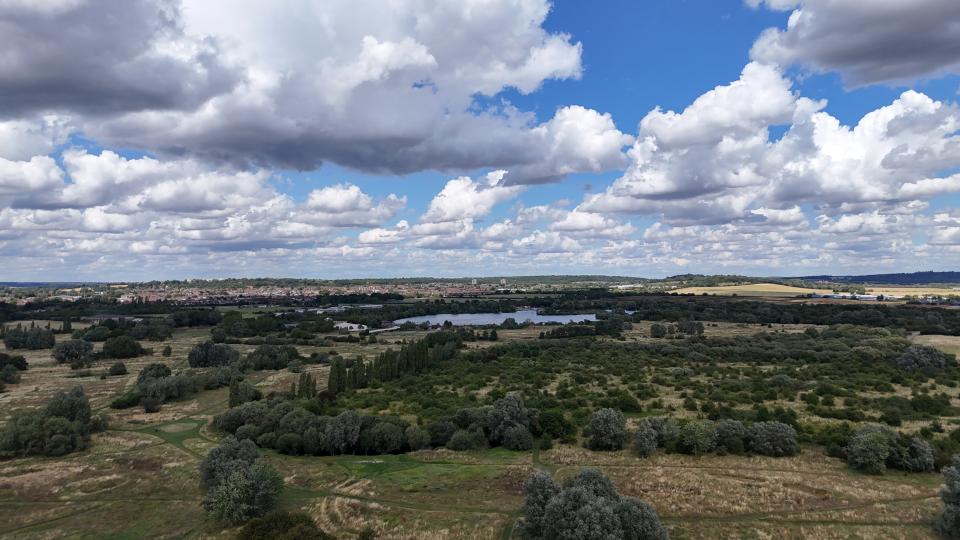
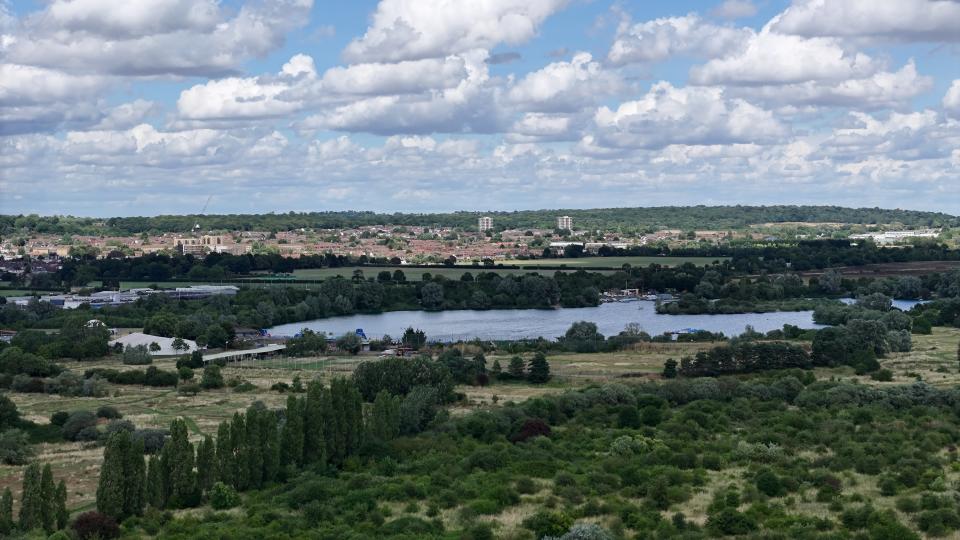
Just for fun, zooming in using Photoshop reveals a lot of detail to be found from a distance.
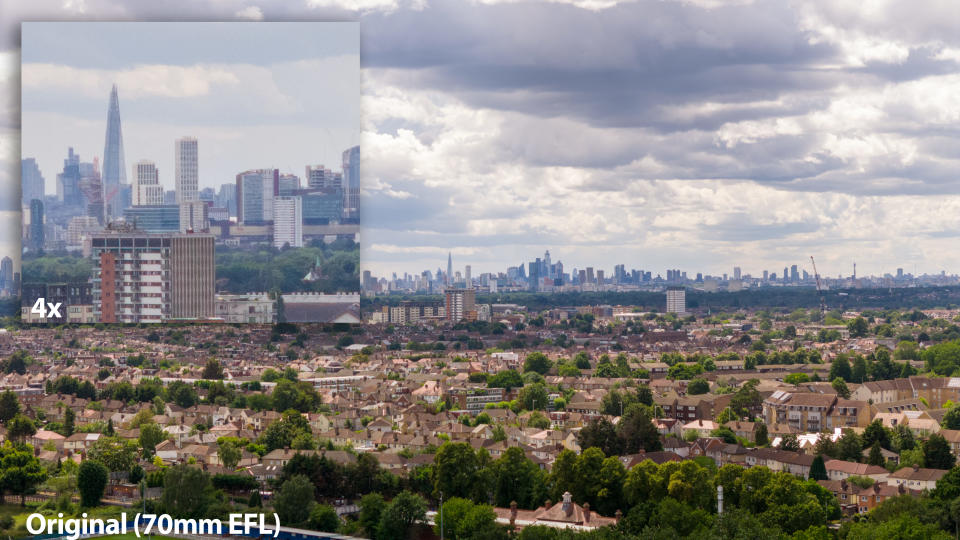
My video samples shows a Hyperlapse which is more about how the aircraft deals with the onslaught of high wind than anything. We also see some nipping down paths, two automated orbits (one at 1x and the other, the same path, at 3x), and a brief clip of the 16:9, which is an impressive 2.7K stream cropped from the full height of the 4:3 sensor.
Testing the AI in 'Normal' mode I tried flying full pelt at a very well-established bush (lots of leaves) and the drone made it around (phew!), though it didn't seem quite as able to spot individual tall weeds rising from the grass. In terms of following me, the drone did a good job too – I didn't detect any improvement to the Mavic 3 Pro's AI, but that's quite accomplished; it was able to 'follow' me from in front, for example, and reposition as I changed.
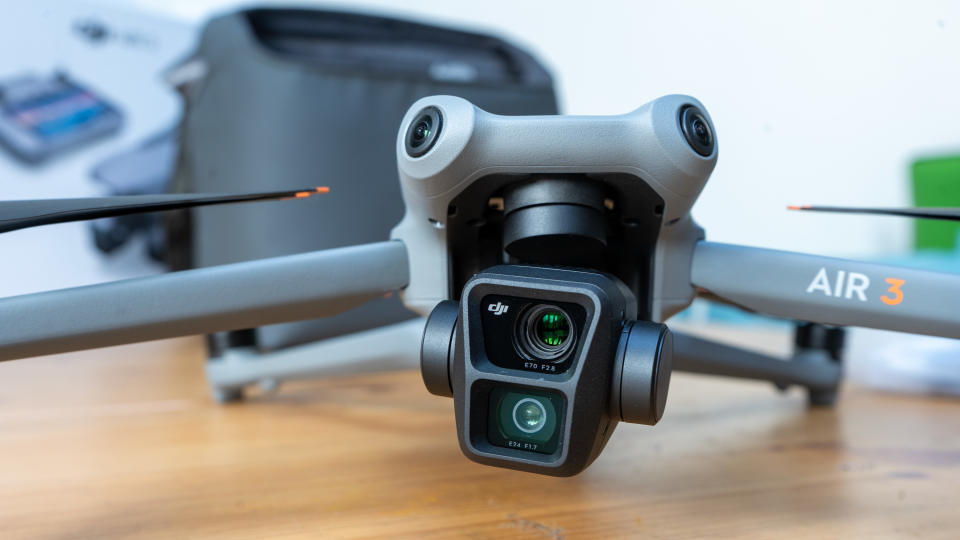
Final verdict
The Air 3 is another noticeable shift for the least consistent of DJI's sub-brands (seriously, check out the original DJI Air) but this version makes much more sense as a product than its predecessor. For me, and I'm sure most potential customers, the dual lens arrangement is a huge benefit – far more so than slightly higher definition video at 30fps. DJI now seems to be saying that the Air 3 will have the flexibility most serious users demand, while reserving the largest sensors and pixel counts for the Mavic 3 series.
What's more, by sticking with similar image sensors, the video doesn't seem to have consistency issues when switching cameras. That's great, though it does beg the question "Why doesn't the drone have full hybrid zoom like an iPhone?" The need to stop recording to switch cameras is curious since you can digitally zoom from 3x to beyond while recording.
Pilots, too, have every right to be happy. The drone has great battery life, is confident in the air, and has gained waypoints so missions can be planned & repeated (great for creative video). Nervous pilots can also be happy; omnidirectional collision detection has finally arrived in the Air series!
Coming in at a significant chunk of cash less than the one-lens Mavic 3 Classic (less by the price of a Mini 2 SE), the Air 3 seems like excellent value for all but the pixel-peeping obsessives. There is enormous creative freedom, high-resolution imagery, and – finally – a real choice of optical zoom at a price that seems a lot more in reach for most than a Mavic 3 Pro.

